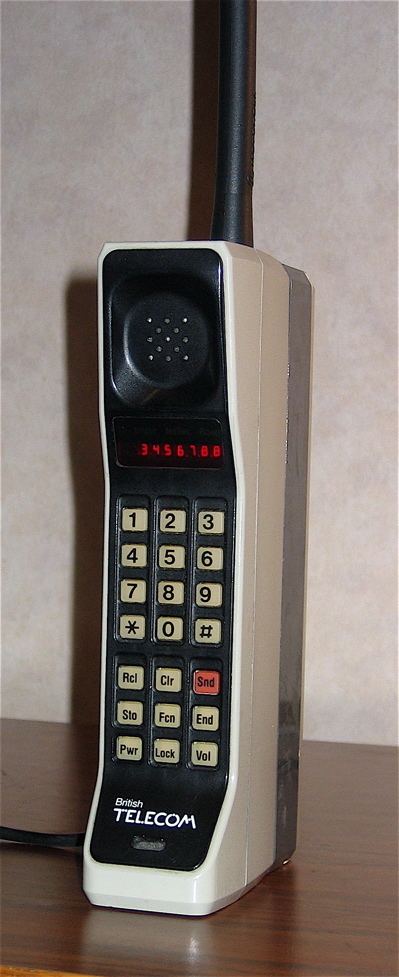Nationality American Name John Mitchell | Known for Wireless Technology | |
 | ||
Full Name John Francis Mitchell Title Chief EngineerPresident & COOVice Chairman Education | ||
John Francis Mitchell (January 1, 1928 – June 9, 2009) was an American electronics engineer and President & COO of Motorola.
Contents
- Family and early years
- Radio telephony and the cell phone
- Other initiatives
- Awards
- Publications
- References
Mitchell led the pioneering development and implementation of the Motorola’s mobile phone technology producing the first portable transistorized pager and cell phone; was the driving force behind building quality into engineering, and the establishment of the Motorola University and Six Sigma Institute; and launched the global Iridium Satellite Constellation. "During his 45-year career, Mitchell shaped the creation of nearly all of the wireless communications industries in the latter half of the 20th century."
Family and early years
He was born in Chicago, Illinois, son of Catholic Irish immigrants,[1] William Mitchell, Cloghboley, Maugherow, Sligo and Bridget Keane, Listowel, Kerry, Ireland.[2] He was married to Margaret and had three children.
Radio telephony and the cell phone
Mitchell became Motorola's chief engineer for its mobile communication products in 1960. Prior to the development of the cell phone, Mitchell and his team of engineers produced and marketed the first transistorized pager and obtained a patent for the concept of portable cell telephony, including small antennae used to help free mobile phone units from car trunks where they were typically installed.
Mitchell, Motorola's chief of portable communication products and Martin Cooper's boss in 1973, played a key role in advancing the development of handheld mobile telephone equipment. Mitchell successfully pushed Motorola to develop wireless communication products that would be small enough to use anywhere and participated in the design of the cellular phone. (See Wiki History of Mobile Phones)
Other initiatives
In 1983, Mitchell was appointed U.S. President Ronald Reagan's National Security Telecommunications Advisory Committee. Mitchell was a senior member of the IEEE, Institute of Electrical and Electronics Engineers;[3] also served a chairman of the Electronic Industries Alliance; and a recognized expert on world trade, serving as director of the National Association of Manufacturers;[4] and an expert on federal fiscal policy. Mitchell was a director of Bell & Howell Company; trustee Engineering Advisory Council, Marquette University;[5] and active participant in the Easter Seals(US) Campaign;[6] and member of the Presidents Council of the American Lung Association.[7] Mitchell was trustee at Illinois Institute of Technology (IIT); the Dublin City University, Ireland; and the University of Limerick Foundation. Mitchell was one of the architects, which also included Chuck Feeney,[8] of the huge expansion of the University of Limerick during the 1990s and 2000s through his work on the University of Limerick foundation. As a philanthropist and member of IIT’s Philip Danforth Armour Society, [9] Mitchell established endowed scholarship funds for the Camras Program,[10] the Leadership Academy, and electrical engineering students. To date, the John F. Mitchell Scholarship Funds have supported more than 70 students at the university.
Awards
Mitchell was awarded Honorary Degrees from the Illinois Institute of Technology (IIT) in Humane Letters & Science, 1995; an honorary doctorate of business administration from Iowa Wesleyan College, on May 18, 1985.; and from Dublin City University, Ireland (Ollscoil Chathair Bhaile Átha Cliath), Ireland, on October 25, 1996. Recipient of the 2003 Chicago Innovation Award. IIT Alumni Association award for Professional Achievement,1985 [11]. Alumni Medal 1994, IIT Alumni Association. IIT Alumni Award for Lifetime Achievement Award (posthumous) 2010.
Publications
U.S. Patent 2,833,994, July 2, 1954 for High Frequency Long-Line Variably End-Loaded with Clarence P. Pipes.
U.S.Patent 2,912,573, November 10, 1959 for Receiver having frequency and amplitude modulation detecting.
U.S. Patent 3,087,117, April 23, 1963 for Portable Transmitter Apparatus with Selective.
U.S. Patent 2,975,274, March 14, 1961 for Frequency Modulation Radio Receiver.
U.S. Patent 3,126,514,October 13, 1961 for Noise Reducing system with Jack Germain. Germain retired as Director of Quality Assurance.
U.S. Patent 3,906,166, September 16, 1975 for a Radio Telephone System. the cell phone. Martin Cooper, Richard W. Dronsurth, Albert J. Leitich, Charles N. Lynk, James J. Mikulski, John F. Mitchell, Roy A. Richardson, and John H. Sangster. NOTA BENE: Two names were botched in the original filing; Albert Leitich's surname was erroneously omitted, and included herein, and the first name of Mikulski was omitted, but included herein. The original document was refiled by Motorola's legal staff, but has not yet been identified. The seeds of the idea for a portable cell phone can be traced to James J. Mikulski, which were rejected by Mitchell for lack of sufficient business justifications. It is rumored that when John Mitchell suddenly recognized during an attempted phone call that his 400MHz phone had inherent limitations, he immediately reversed his previous decision and championed the portable cell phone concept.
U.S. Patent 5,650,776, July 22, 1997 for a Communications Receiver with Thomas F. Holmes
